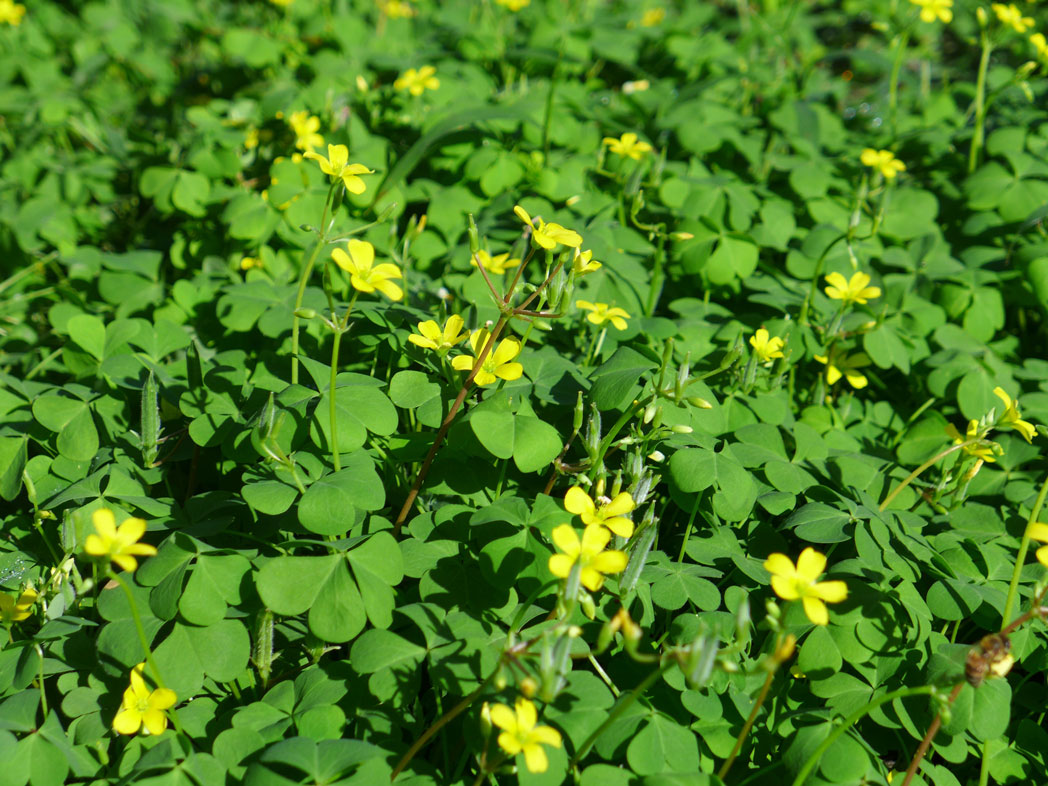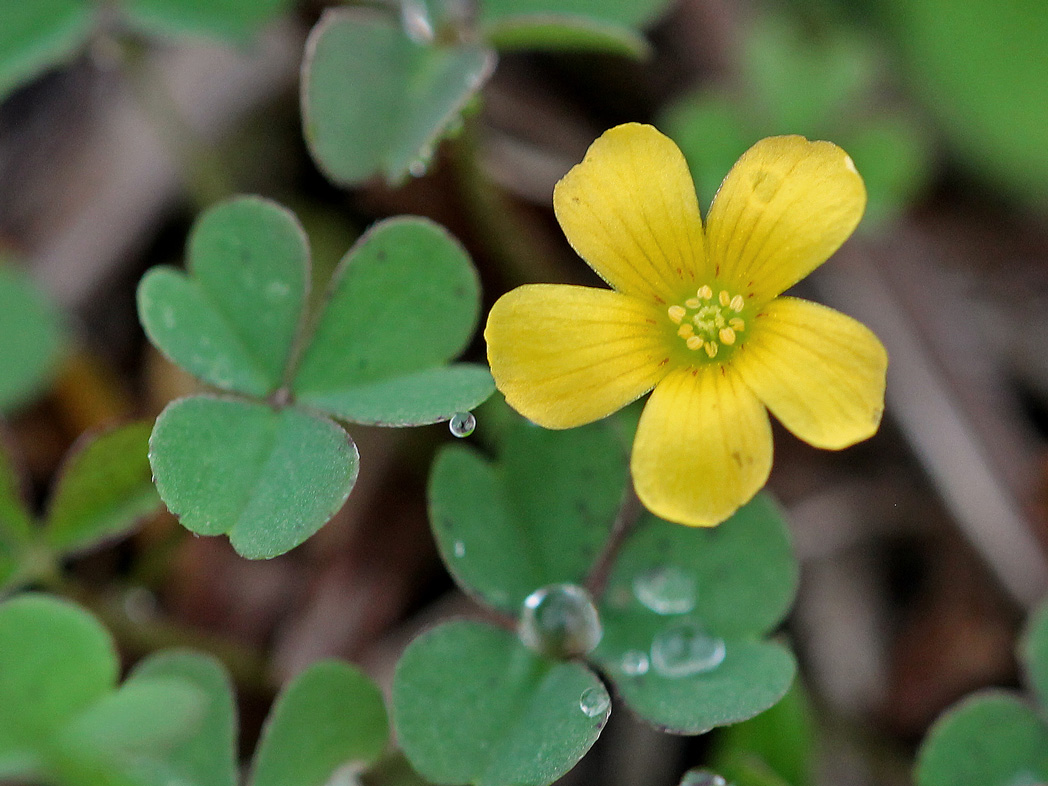Creeping woodsorrel
Pictured above: Creeping woodsorrel (Oxalis corniculata) by Mary Keim. Click on terms for botanical definitions. View as a PDF.
No, it’s not a shamrock. It’s Creeping woodsorrel (Oxalis corniculata), a ground-hugging native with distinct clover-like leaves and sunny yellow flowers. It may bloom any time of the year, but it flowers and fruits most in spring. The flowers attract bees, flies and small butterflies. Creeping woodsorrel is common along roadsides and in urban landscapes and disturbed areas. It often gets a bad wrap as a “weed,” but its spreading, low-growing habit make it an excellent groundcover option.
Creeping woodsorrel flowers are born in small cymes of two to five flowers on the ends of short, slender stalks. Each flower has five yellow petals, each about 1/8 to 1/3 inch long. Leaves are trifoliate and each is divided into three rounded leaflets. Margins may have a reddish-purple hue. Stems are prostrate and root at the nodes. Seeds develop in cylindrical capsules. Each seed capsule can hold up to 50 seeds, and a single plant can produce up to 5,000 seeds. When the seeds mature, the capsule will turn downward and forcefully discharge its seeds into the surrounding area.

The entire plant is edible and high in vitamin C. Leaves and stems may be eaten raw or cooked and have a tangy, sour taste due to the presence of oxalic acid.* A drink can be made by steeping the leaves in hot water for 10 minutes; chill and add sweetener for a refreshing lemony treat. The root may be eaten raw and is less sour than the rest of the plant. (Sometimes it’s even sweet!)
*Large amounts of oxalic acid can inhibit calcium absorption. Cooking can reduce the amount of acid, however, people with kidney stones, gout or similar conditions should not overconsume it. Oxalic acid is also found in spinach, beets, chard, rhubarb, cocoa and many other common foods.
The genus name Oxalis is from the Greek oxus, meaning “sharp” or loosely “sour.” The common name “sorrel” is from the German sur, or “sour.” Both refer to the plant’s tart taste.
Family: Oxalidaceae
Native range: Nearly throughout Florida
To see where natural populations of Creeping woodsorrel have been vouchered, visit www.florida.plantatlas.usf.edu.
Hardiness: 8A–11
Soil: Moist to dry soils
Exposure: Full sun to partial shade
Growth habit: 3–6”+ tall and spreading
Propagation: Self-seeding
Garden tips: Creeping woodsorrel is adaptable to a variety of conditions. It makes a great groundcover and spreads readily by rooting stems and self-sown seed. (Seeds germinate when temperatures are between 60 and 80 degrees.) The plant can also be grown in a container to use as a potherb.

